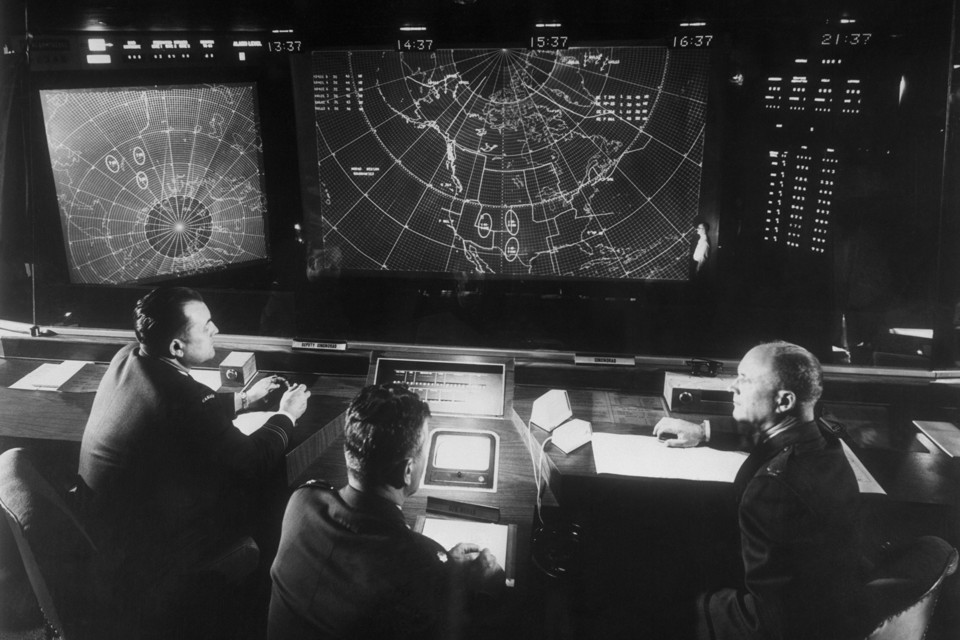Computer predicted the victory of the United States in Vietnam

This instructive story about how the results of computer analysis of big data can mislead us, occurred half a century ago. Around the middle of a monumental documentary by Linn Novick and Ken Burne on the Vietnam War, the announcer tells a joke that reflects the relationship between the military and computers in the mid-60s.
“ There is an old apocryphal story that in 1967 they descended into the basement of the Pentagon, then computers occupied entire cellars, and entered everything they could count through punched cards: the number of ships, tanks, helicopters, artillery, machine guns, ammunition — everything that resisted to calculus, ”says James Wilbanks from the Department of Military History at the US Army Command and Staff College. “ They laid it all in the device and asked,“ When will we win in Vietnam? ". It was on Friday, the computer counted all the weekend, and when they returned on Monday, there was only one card in the tray of punched cards with the results. She said: “You won in 1965.”
')
Of course, first and foremost is a joke. But considering that Secretary of Defense Robert McNamara emphasized the processing of such data, I was interested in whether software was used in those years to accurately calculate the time that the United States won the war. And is it possible that it really gave such an answer.
The most notable mention of the above story can be found in the “American Strategy in Vietnam: A Critical Analysis” study by Harry Summers. But it says that computer analysis was done by the Nixon administration, not by Johnson:
“ In 1969, the Nixon administration took all the data for North Vietnam and the United States and fed them to a computer at the Pentagon — population size, GDP, production, number of tanks, ships and aircraft, size of the armed forces, and so on. Then the computer was asked: "When will we win?" After a moment, he replied: “You won in 1964!”
Summers claims that this "bitter little story" became known "in the last days of the Vietnam War." He notes that “war, even if limited, is more than just measuring, evaluating and calculating.” Undoubtedly, the capabilities of Vietnam were evaluated in more precise ways. MacNamara introduced into practice the methods that the historian called "computer quantitative methods of business analysis", "who proposed new and original procedures for collecting, manipulating and analyzing military data."
In practice, this meant collecting huge amounts of data that needed to be sent to computer centers and entered using punched cards. One of the big computer programs was the Hamlet Evaluation System , which tried to quantify how the American “appeasement” program was carried out by monitoring 12,000 Vietnamese villages. According to the RAND report , “every month HES generated about 90,000 pages of data and reports.” "This means that within four years of the full functioning of the system, it generated more than 4.3 million pages of information."

Data generated by the Hamlet Evaluation System ( Dave Young ).
After selecting the starting point, decision makers could see progress. And their desire to see progress led to pressure on those who collected data and to generate a rainbow picture. The inconsistency of reality and the model of this reality, based on data, was one of the key themes of that war.
“The decisive factors have always been the intentions of Hanoi, the will of the Viet Cong, the state of South Vietnamese politics and the loyalty of the peasants. Not only because we deeply ignored these factors, but also because it was impossible to bring them to the level of tables and calculations, no serious efforts were made to analyze them, ”wrote Richard Goodwin, author of speeches for Presidents Kennedy and Johnson. “There was not a single Vietnamese culture expert at the table. Poisoned by tables and computers, the Pentagon and war games, we publicly relied on the calculations of the non-computable. ”
But was there really a computer in the Pentagon that was doing calculations on the topic “When will we win the war”?
On October 27, 1967, The Wall Street Journal published an article from its Washington bureau on the first page, which described the “victory index”.
US strategists are looking for a "victory index" to measure progress in the Vietnam War. They need a single statistical reflection of enemy penetration, losses, conscription, appeasement of the local population, cleared roads. The leadership of the US intelligence is secretly concerned that it is not possible to work out this index. It is ordered to continue work in this direction.
Well, the victory index is not a computer program that can be asked “When will we win the war?”. But pretty close! The table can be printed. Based on current results, you can predict future success. At least we can say that the officials tried to build a system that can be the very core of truth in the midst of this embellished story.
And it is possible that the specific error - the message about the victory already won by the USA - was indeed. Intelligence tried to use different models to give meaning to its data, and it was possible that there were attempts at computer analysis, as a result of which it turned out that the peak of the victory index had already been passed. That the war has already been won.
In a world filled with data, this story about the Pentagon’s computer reminds us that the model is not the real world, and that ignoring reality has terrible consequences.
Source: https://habr.com/ru/post/341004/
All Articles